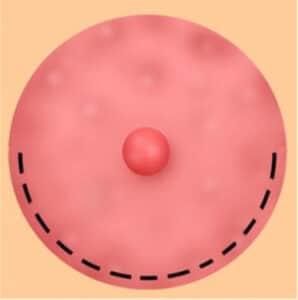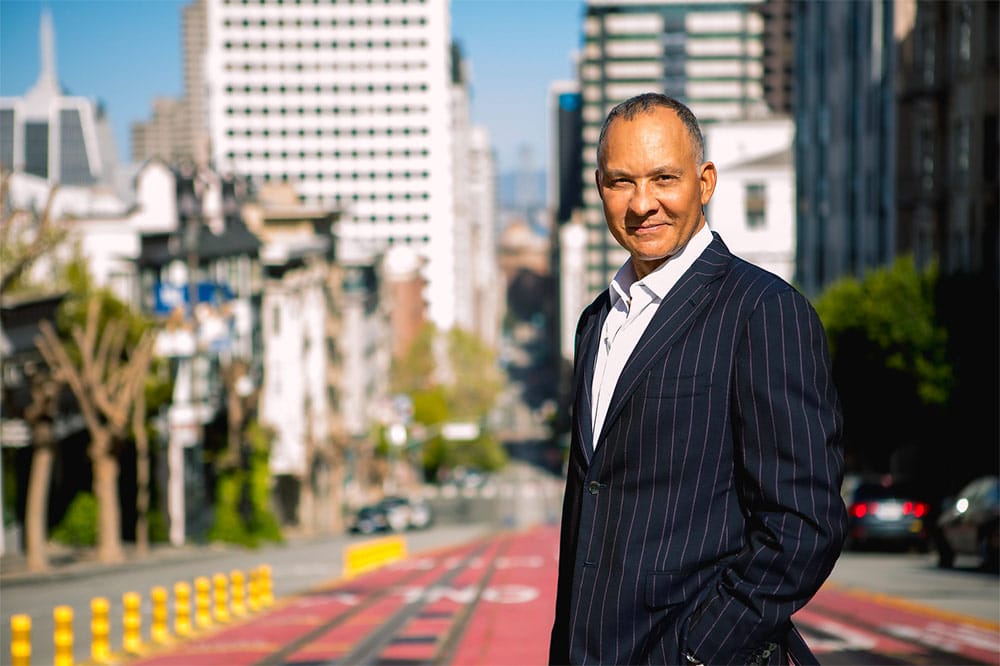After Gynecomastia Surgery…Will Nipple Sensation be Lost?

10 Min Read:
While loss of nipple sensation is rare after gynecomastia surgery, it is possible. The nerves around the nipple are disturbed during the procedure, causing temporary numbness. This usually decreases right after surgery, and then returns over the following weeks to months. It can take up to 12 months to restore the sensation completely. Sometimes, the sensation may not be completely restored compared to the surrounding areas.
Key Takeaways
- Gynecomastia surgery is a cosmetic procedure aimed at reducing male breast size and improving self-esteem, utilizing techniques such as liposuction and excision based on condition severity.
- Post-surgery nipple sensation changes are common and typically temporary, with most patients experiencing gradual improvement within months, although certain rare cases could lead to permanent loss of sensation.
- Choosing an experienced surgeon like Dr. Delgado, who implements preventive measures during surgery, is crucial to minimizing risks and ensuring optimal recovery outcomes.
Understanding Gynecomastia Surgery
Male breast reduction surgery, also known as gynecomastia surgery, is a specialized procedure aimed at diminishing the size of men’s enlarged breasts while improving their chest shape. It’s particularly transformative for individuals who have grappled with issues of self-confidence stemming from excess breast tissue. The operation involves removing excess breast tissue and occasionally skin, which results in a more masculine-defined chest profile.
Depending on the extent of gynecomastia present, the surgical approach will differ. Liposuction alone may be adequate for less severe cases to eliminate fatty deposits. More significant conditions require excisional techniques that target both glandular tissue and surplus skin removal to ensure a flatter and conventionally male appearance of the chest.
Individuals deemed suitable candidates for male breast reduction surgery maintain good health status and realistic expectations of what can be achieved through the breast surgery. Addressing aesthetic concerns goes hand in hand with considerably improving one’s quality of life, since bearing enlarged male breasts — often colloquially termed “man boobs” — can deeply influence not only interpersonal relations, but also professional engagements. Recognizing these comprehensive impacts is essential for anyone contemplating such corrective surgery.
Nipple Sensation Post-Surgery: What to Expect
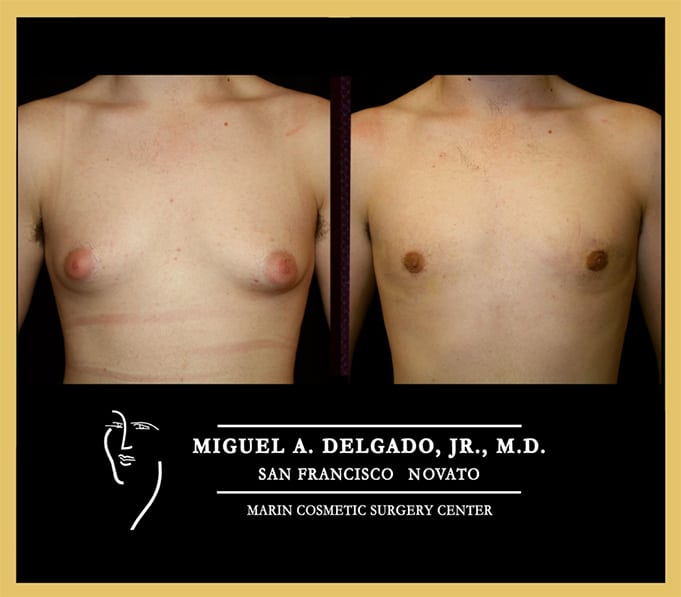
Many men considering male breast reduction surgery might be worried about the potential impact on their nipple sensation due to gynecomastia surgery. Temporary alterations in how the nipple feels can occur, which is a byproduct of how the tissues near the nipple are manipulated during this type of breast surgery.
The good news for most patients is that such changes in nipple sensation following reduction surgery usually resolve over time. Sensation disturbances could differ among individuals. Some may notice temporary numbness, particularly those with more pronounced cases of gynecomastia. Being aware that these sensory modifications tend to be short-lived can offer comfort to individuals apprehensive about surgical treatment for gynecomastia.
Temporary Numbness and Swelling
Experiencing temporary numbness after undergoing gynecomastia surgery is not unusual, as swelling can affect nerve function in the area around the nipple, leading to sensation loss. This lack of feeling typically resolves over time, as it’s a normal aspect of the healing process.
The surgical procedure itself may temporarily disrupt neural pathways near the nipple, causing this absence of sensation. Although individuals may find this discomforting, it signals that recovery is underway. Local anesthesia utilized during the operation contributes to short-term numbness until its effects dissipate along with any residual anesthetic agents.
To help diminish swelling and expedite tissue repair following surgery for gynecomastia, patients are often instructed to wear a compression vest. Not only does such a compression vest help alleviate swelling, which accelerates both healing and restoration of sensitivity in affected areas.
Gradual Return of Sensation
Most patients will notice a gradual return of nipple sensation over time, frequently starting to improve within the first few weeks after surgery. The complete recovery of sensation may span from three months to six months, and sometimes it can extend up to a year.
As this period of recuperation unfolds, the body undergoes healing, while the nerves are in the process of regenerating. Hormonal fluctuations influence this period, as well as tissue repair, and require patience. Fortunately, most patients witness considerable enhancements in their nipple sensation as time progresses.
Rare Cases of Permanent Sensation Loss
The occurrence of diminished sensation in the nipple following gynecomastia surgery is an uncommon event. The likelihood of a permanent loss of feeling can be affected by aspects like the surgical method employed and how much tissue needs to be excised. Persistent alterations in nipple sensitivity could result from nerve damage incurred during the procedure.
Nevertheless, such cases are infrequent, as most individuals undergoing this type of surgery typically experience a return of nipple sensation when healing processes allow for nerve recovery. It’s important that surgeons convey these potential risks to their patients, establishing realistic expectations and awareness regarding the unusual nature of persistent sensory deficits post-surgery.
Severe cases of gynecomastia (grade 3 and 4) and nipple sensation loss
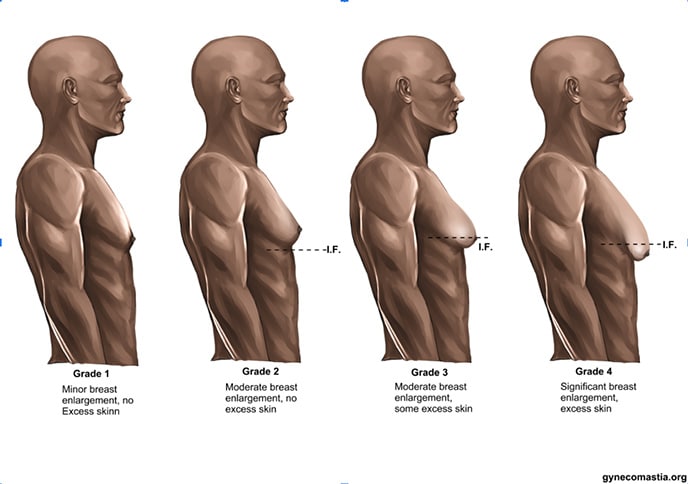
For grade 4 and some grade 3 cases, male breast reduction surgery requires a double incision mastectomy with a free nipple graft. In such instances, nipple sensation is typically limited to light touch. The nipple-areola complex is entirely detached from its blood supply, resized, and repositioned to achieve a more masculine appearance.

Preventative Measures During Surgery
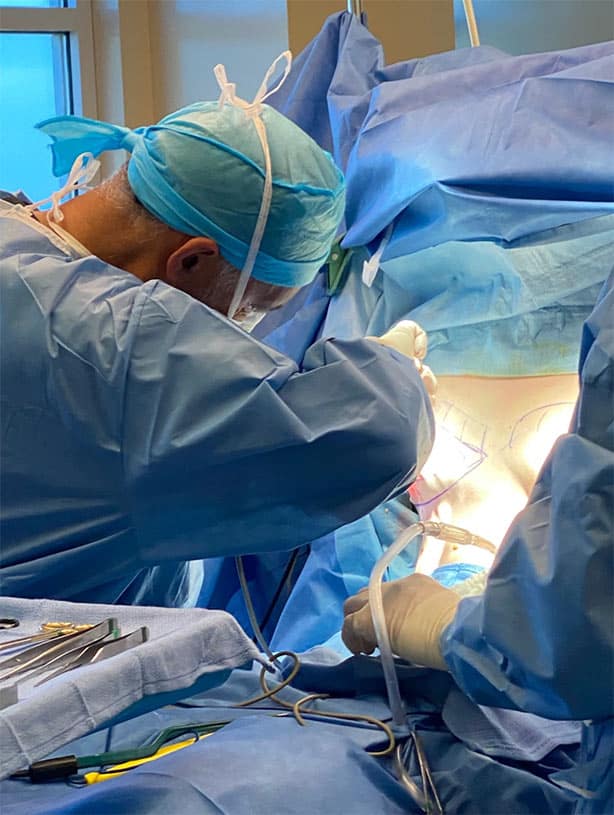
Undergoing male breast reduction surgery with a skilled and experienced plastic surgeon can significantly reduce surgical risks. Plastic surgeons such as Dr. Delgado implement various safeguards to preserve nipple sensation, notably by carefully positioning incisions in locations that steer clear of critical nerve pathways, thereby protecting nerves related to nipple sensitivity.
In his plastic surgery practice, Dr. Delgado uses state-of-the-art techniques and meticulous preoperative planning to achieve optimal results for his patients. His approach often includes creating small incisions, coupled with delicate handling of tissue, to minimize potential harm to neural structures around the chest area. Before proceeding with any surgical intervention for gynecomastia, a comprehensive evaluation is carried out concerning each patient’s medical history and present health status, so that an individualized strategy can be developed fittingly for them. This customized attention contributes both toward reducing operative risks and ensuring a more efficient healing process post-surgery.
Patient Experiences with Nipple Sensation Post-Surgery
The range of outcomes regarding nipple sensation following surgery is quite broad. While some patients might experience a decrease in sensitivity shortly after their procedure, it returns as they recover. Conversely, during the recuperation period, there are those who encounter heightened sensitivity due to nerve regeneration.
Remarkably, many individuals have noticed an uptick in their nipple sensitivity following the operation, which has positively contributed to their tactile sensations. Many men express considerable mental comfort post-surgery. They report feeling more at ease with how they look, and observe a boost in self-confidence that coincides with variations in nipple sensation.
These diverse accounts underscore the necessity for patients to manage expectations realistically before breast surgery, and acknowledge that each person’s journey through recovery will differ.
Ensuring Optimal Results and Recovery
Minimal incision pull-through procedure
To ensure a smooth and successful recovery from breast reduction surgery, adhering to several critical steps is necessary. A layered suturing technique during the procedure can help maintain the structure of excess breast tissue, which is important for both healing and sensation after surgery. Regular post-surgical appointments are crucial to track recovery progress and swiftly address any concerns that may arise.
In terms of post-operative care, it’s vital for patients to keep their surgical sites clean and dry to prevent infection. They should refrain from rigorous activities for at least four to six weeks following their operation. Consistently wearing a compression garment for a month or more aids in mitigating swelling, as well as supporting convalescing tissues. Staying hydrated alongside consuming nutrient-rich meals with plenty of fruits and vegetables greatly contributes to efficient recuperation.
Commencing gentle walks several days after the surgery will facilitate better blood flow, which helps heal. It’s also advisable for patients to limit exposure of their incisions to sunlight, so that they can not only avoid darkening scars, but also promote favorable results throughout the entire rehabilitation journey.
Why choose Dr. Delgado?
Renowned for his profound expertise and specialized training in cosmetic procedures, Dr. Delgado stands out particularly for gynecomastia surgery—a key area of focus among plastic surgeons. His credentials reinforce his prestigious standing from the American Board of Plastic Surgery, which attests to his unwavering dedication to excellence in patient care.
Operating within the San Francisco Bay Area, Dr. Delgado has earned global recognition as an eminent surgeon in treating gynecomastia, with a record of performing thousands of such surgeries successfully. A remarkable indicator of his surgical precision and careful technique is that patients typically report no persistent problems with sensation post-surgery.
Opting for Dr. Delgado’s expertise in male breast reduction surgery ensures entrusting your care to a board-certified surgeon with an impressive record of over 5000 cases handled. The provisions enhance his unparalleled experience at his private surgery center, designed to ensure patient safety and comfort.
Dr. Delgado stands out as a preferred surgeon due to his thorough methods and unwavering commitment to patient welfare, making him an excellent choice for those in pursuit of effective treatment for gynecomastia. The significant number of successful procedures he has completed, coupled with high levels of patient satisfaction, are testament to his proficiency in this field.
Summary
In essence, men dealing with the issue of enlarged breasts can see significant improvements in their quality of life through gynecomastia surgery. It’s normal to encounter temporary shifts in nipple sensation after the procedure. It is uncommon for these changes to be permanent. The likelihood of complications is greatly reduced by taking precautionary steps during surgery and relying on the proficiency of seasoned surgeons, such as Dr. Delgado, which leads to superior results.
Following a successful male breast reduction surgery, patients often experience a notable increase in self-confidence and feel more comfortable with their appearance. Choosing a highly skilled surgeon and diligently following postoperative care instructions are essential steps toward achieving a safer and more satisfying masculine chest contour.
Frequently Asked Questions
Will I lose nipple sensation permanently after male breast reduction surgery?
While permanent loss of nipple sensation after male enlarged male breasts surgery is rare, most patients typically undergo temporary changes that tend to improve with time and return to normal.
How long does it take for nipple sensation to return after surgery?
After most cosmetic procedures surgery, the revival of sensation in the nipple usually occurs slowly and can take months to fully return, with complete restoration possibly taking as long as up to one year.
What causes temporary numbness after gynecomastia surgery?
Temporary numbness after male breast reduction surgery is primarily caused by swelling due to breast tissue removal and interference of nerve conduction in the nipple area.
It is generally a normal part of the healing process.
What measures are taken during male breast reduction surgery to prevent loss of nipple sensation?
To prevent loss of nipple sensation during surgery, surgeons carefully plan incisions to avoid major nerve pathways and employ gentle breast tissue handling techniques to reduce the risk of nerve damage.
Such meticulous measures aim to preserve sensory function.
Why should I choose Dr. Delgado for my gynecomastia surgery?
Choosing Dr. Delgado for your plastic surgery is wise due to his extensive experience, having performed over 5,000 cases. This reflects his commitment to high standards of care and successful patient outcomes.
Is male breast reduction surgery painful?
Male breast reduction surgery is performed to remove excess breast tissue, which is generally not painful unless complications arise. The typical recovery process involves only a few days of pain medication. Discomfort is more commonly associated with the compression vest or drain insertion points.
Is male breast cancer a concern with men with enlarged breasts?
While breast cancer can occur at any age, it’s rare for young men to develop it. The risk of breast cancer increases with age, as men get older and 60-70 years old.
